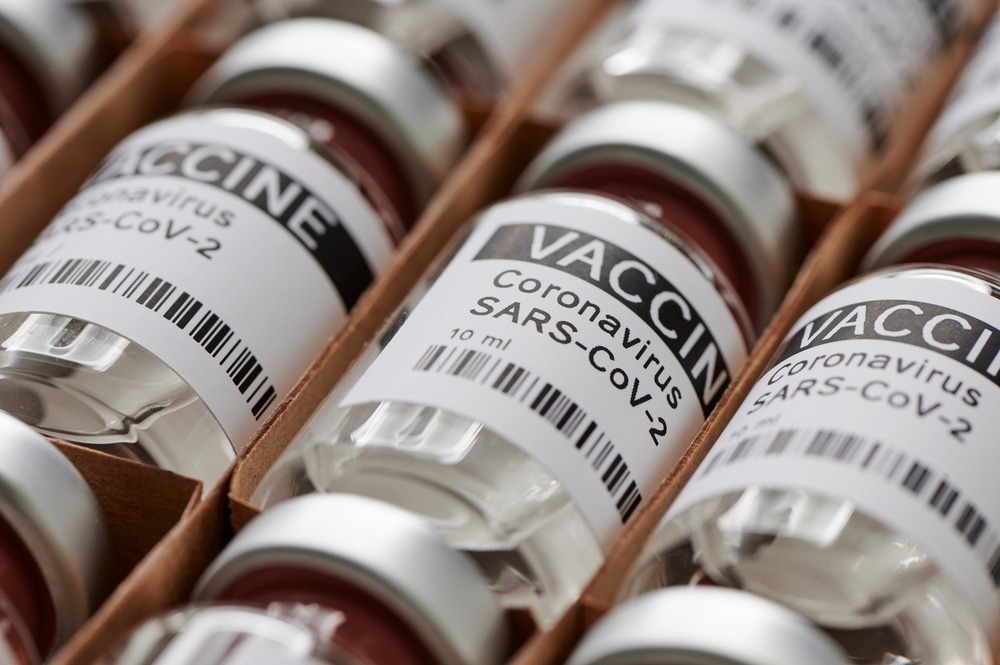In a recent study published in Nature Medicine, researchers conducted a retrospective analysis to investigate the impact of vaccine-sharing strategies on the heterogenous global distribution of coronavirus disease 2019 (COVID-19) vaccines.
 Study: Retrospectively modeling the effects of increased global vaccine sharing on the COVID-19 pandemic. Image Credit: M-Foto/Shutterstock
Study: Retrospectively modeling the effects of increased global vaccine sharing on the COVID-19 pandemic. Image Credit: M-Foto/Shutterstock
Background
During the initial stages of the COVID-19 pandemic in early 2020, most countries relied on non-pharmaceutical interventions such as social distancing and lockdowns to decrease the spread of severe acute respiratory syndrome coronavirus 2 (SARS-CoV-2). However, these mitigation strategies were socially and economically detrimental.
The unprecedented growth in vaccine technology resulted in close to 49% of the global population being administered two primary doses of one of the many COVID-19 vaccines by January 2022. However, the global distribution of vaccines has been uneven, with almost 90% of the adults in many high-income countries being fully vaccinated, while middle and low-income countries have significantly lower coverage.
Most low and middle-income countries have depended on vaccines donated by high-income countries or supplied by the World Health Organization’s (WHO) vaccine-sharing schemes. However, having achieved close to complete primary vaccine coverage, most high-income countries face the decision to extend their vaccination program to the younger population and provide booster doses or donate the surplus vaccines to countries in need.
While high-income countries have a larger elderly population, low-income countries lack the medical and economic resources to handle increasing COVID-19 morbidity or enforce non-pharmaceutical mitigation measures. Although some countries have successfully limited the disease within their borders, the global spread and emergence of new variants can only be limited by reducing the number of global infections.
About the study
In the present study, the researchers used a global model based on country-level SARS-CoV-2 vaccination and COVID-19 data from 152 countries to perform a retrospective evaluation to understand the effect of increased vaccine sharing on the spread of the pandemic. The 152 countries were divided into four income groups based on the World Bank classifications. The model also accounted for age-related COVID-19 dynamics by incorporating demographic data from each country, age-related susceptibility, symptoms, and disease severity into the model.
The model simulated five vaccine-sharing scenarios. The first one was the current vaccine-sharing scenario. Scenarios two, three, and four were where vaccines were shared once countries with vaccines had administered two doses to 100% of their population, all individuals above the age of 40, and all the elderly population above 65 years of age, respectively. The last scenario simulated complete vaccine sharing to achieve global vaccination of equal portions of each country’s population or all of the global elderly population.
The study also investigated two models of non-pharmaceutical interventions — one where the following of mitigation protocols was not dependent on infection levels, and another where countries that donated more vaccines relaxed social restrictions more slowly to compensate for the lower vaccination coverage. Additionally, the proportion of each variant calculated from data from the Global Initiative on Sharing Avian Influenza Data (GISAID) database was incorporated into the model.
Results
The results indicated that increased vaccine sharing without adaptive non-pharmaceutical interventions would have lowered the global mortality during the COVID-19 pandemic by 1.3 million, especially in low-income countries. The simulations also found that additional measures, such as slower relaxation of mitigation strategies by countries that donated more vaccines, could have further lowered the mortality rate.
Higher vaccine sharing would have reduced COVID-19 infections in low, middle, and high-income countries by 25.9%, 12.6%, and 15%, respectively, by mid-2021. The authors believe that increased vaccine sharing during the early stages of the pandemic would have been more beneficial since the rapid spread of infection in countries without vaccination coverage would have generated population immunity, making delayed vaccine sharing less effective. Nevertheless, vaccine sharing continues to be necessary with waning vaccine efficacy and the emergence of immunity-evading variants.
Conclusions
To summarize, in this retrospective study, researchers used a global model based on data on COVID-19 vaccination coverage and SARS-CoV-2 infections in 152 countries to determine the effect of various vaccine-sharing scenarios on the spread of COVID-19, projected between early 2020 and late 2021.
Overall, the results indicated that increased vaccine sharing by vaccine-rich countries combined with adaptive mitigation measures where non-pharmaceutical interventions were relaxed slowly in countries that donated more vaccines would have drastically reduced COVID-19-related mortality by mid-2021. The authors proposed that for future pandemics, a strategy of vaccine sharing based on need, not wealth, would benefit all countries.